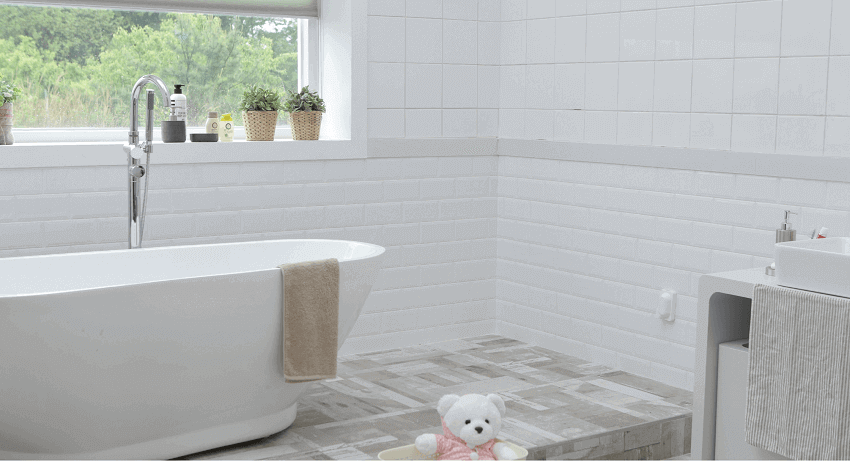You often noticed water infiltration under the bathroom walls and tiles which is small but actually a big problem Waterproof bathroom floor after tiling is the ideal solution to overcome it.
For the structural integrity of a home, water is the biggest villain, and nowhere is this more true than in a bathroom where humidity is a constant factor.
Bathrooms and kitchens are renovated more frequently than any other room on the ground: even a small water infiltration under the walls, countertops, and flooring surfaces quickly begins to destroy the facility.
When considering Bathroom and Kitchen Floor Remodeling it is always wise to consult with experts because it saves your time and money in repairing and maintaining in the future.
Good planning during the construction stage itself is essential to achieve a maintenance-free and cost-efficiency bathroom for years.
Here are a few tips to help you to waterproof bathroom floor after tiling:
- Use waterproof specialized materials
Whilst organic building materials can be a great choice for most areas of the house, plant-based material such as wood, bamboo, paper or jute, does not apply in moisture-conscious areas such as a bathroom.
Bathrooms are better equipped with inorganic materials like stone, metal, plastic and ceramic or porcelain tiles because they are not moisture-impacted. Moulds and mildew are more resistant than organic materials, and humidity causes them not to decay and rot.
- Fix water-resistant adhesive tiles
Tile adhesives have been used to replace the usual method of fixing tiles with cement and sand.
This is a ready-mixed cement dry powder, which is blended into a paste used to fix the tiles with water. It is rapidly hardened and improves the impermeability of the label against the penetration of water.
- Interfaces procedure
To prevent the inadequate strength of the base course leading to insufficient adhesion between the water-proof layer and the base course, the interface between the water-proof layer and the base layer is treated properly.
The interface treatment agent and cement generally are used for the composite configuration of the tile binding layer and the waterproof protective layer.
- Use high gross paint
The walls of the bathroom tend to strike and stain in flat or matte shaped interior paint. Use glossary paints to prevent inevitable baths and condensation sprinkles.
Satin, eggshells and semi-gloss are preferred in a bathroom for easy use and durability.
- Treating the gap in tiles
The gap between the tiles should generally be no smaller than 2 mm, making stress release and reducing the likelihood of hollowing.
Furthermore, tile joint filling should be complete so that there is no lack of filling and that the external moisture enters the tiles, which causes adverse effects on the binding force.
- No pipe joint vacuum
The majority of bathrooms have covered PVC pipelines. They are prone to leakage with their pipe joints. Ensure that these joints are secured with waterproofing tape, it is important. Make sure that the joints have no gaps or where the pipes are curved.
- Elastomeric screening agent
Silicone seals in areas like where a bath or dish meets tiles or around the edge of a shower panel are highly advised.
This material is flexible and durable and is waterproof, making it ideal for sealing joints and cracks.
Sealants used properly are an effective way of plugging any leaks between two different materials or surfaces in the joints.
It is not a one-and-done event to keep a waterproof bathroom as well as keeping your bathroom in good condition. Also, follow these regular practices to manage moisture:
- Use bath mattresses
- Cracks are gaining ground
- Tile seams sealing
- Use strong shower ribbons.
- Immediately mix up spilled water
- Regularly painting walls
- Settlement of flooring gaps
It is essential to ensure proper water protection in wet areas – water leaking into the floor and wall can easily rot structural timber and damage the house seriously.
The worst thing about this type of damage is that you usually won’t realize it’s until the worst of the damage is done.
A huge problem has been the terrible damage caused by badly installed waterproofing, and in recent years there were several changes to the requirements for waterproofing.
It is better to choose waterproofing that gives benefits throughout several years. So, you live peacefully and stress-free about bathroom leakage.



